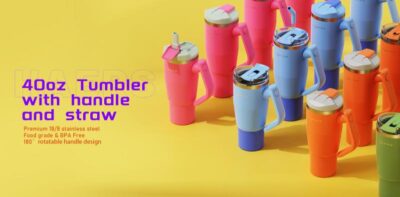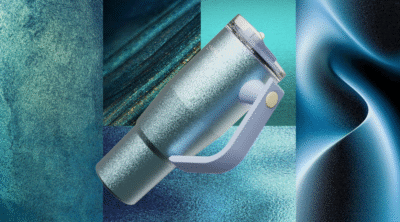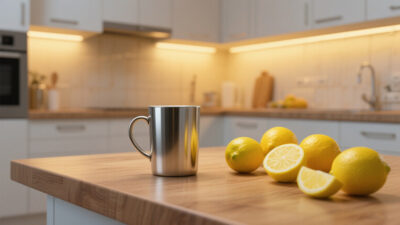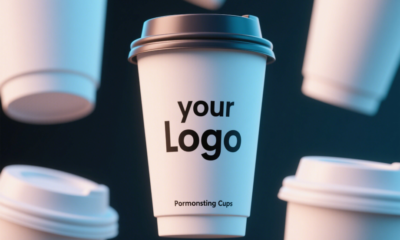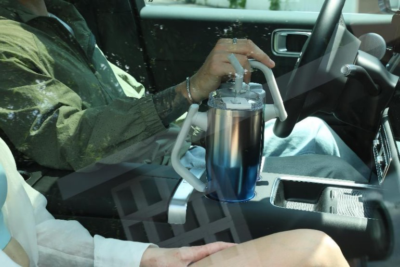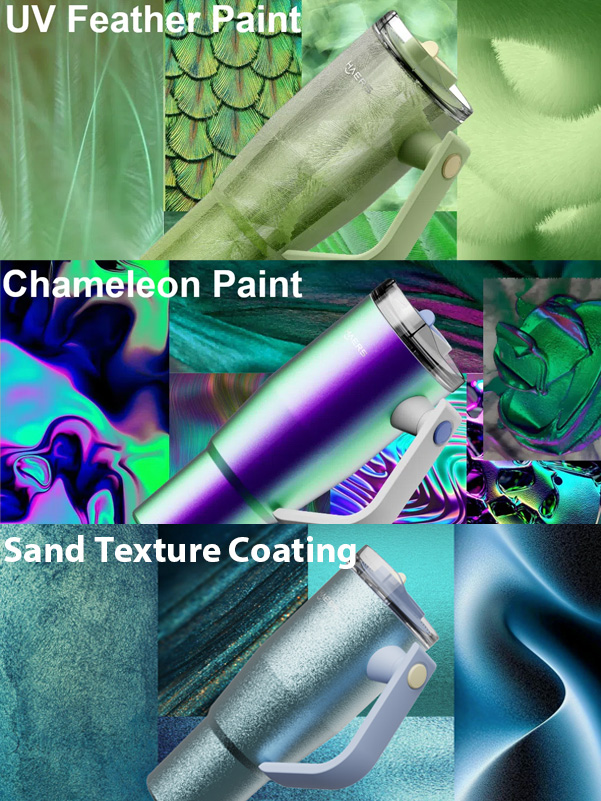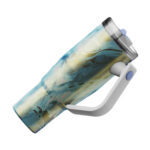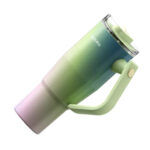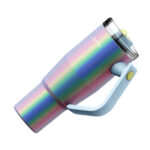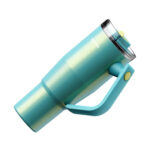The Ultimate Comparison of Vacuum Food Jar vs Lunch Box for Sellers
If you’re in the business of food storage products, you’ve probably noticed that both vacuum food jars and lunch boxes are popular choices among consumers. At first glance, they seem to do the same thing — store food and make it easy to carry. But when you look deeper from a product development and manufacturing perspective, they’re quite different.
Each category has its own target user, functional focus, and production logic. Understanding these differences helps us decide which direction to take when developing new SKUs, optimizing costs, or offering customized solutions for clients.
Table of Contents
Toggle- 1. Function and Consumer Scenarios: How They Serve Different Needs
- 2. Materials and Manufacturing: What Makes Food Jars and Lunch Boxes Different
- 3. Function and Use Case Comparison: Matching Product to Real-World Scenarios
- 4. Market Trends & Brand Development Insights
- 5. Cost and Pricing Analysis for OEM/ODM Projects
- Fun Fact: Can Food Be Cooked in a Vacuum Thermos?
1. Function and Consumer Scenarios: How They Serve Different Needs
Let’s start with the basics — how people actually use them.
A food jar is designed for one main purpose: keeping food hot or cold for long hours. Thanks to its vacuum insulation, it’s perfect for soup, porridge, noodles, or stews — meals that need temperature control. That’s why food jars are so popular with office workers, students, and outdoor users who want a warm meal on the go.
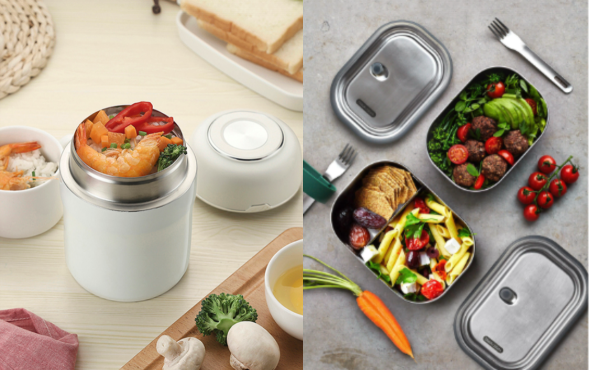
A lunch box, by contrast, focuses on food organization and portioning rather than insulation. It’s great for mixed meals — rice, veggies, and proteins in separate compartments. The design is usually lighter, easier to clean, and can come in multiple materials such as PP, Tritan, or stainless steel.
From a seller’s point of view, this means the selling story and production focus are not the same.
A food jar is more of a thermal tech product, where insulation performance and vacuum sealing quality define the brand value.
A lunch box emphasizes design, practicality, and appearance, leaving more room for creative structure and color customization.
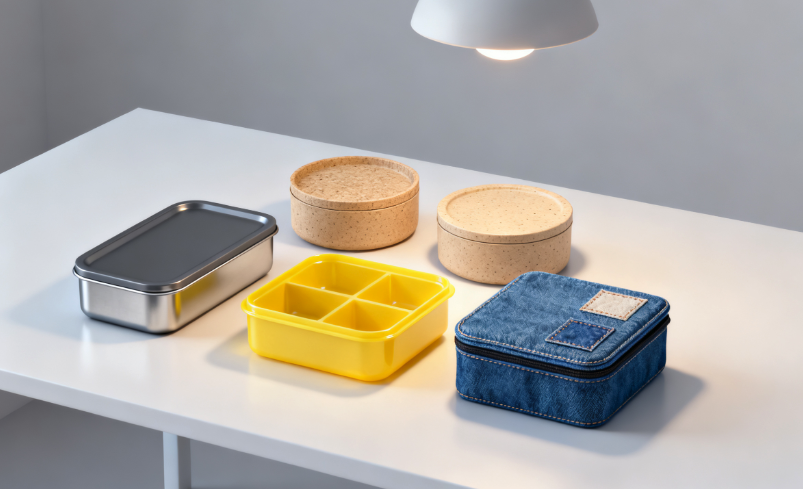
These differences also affect everything downstream — from material sourcing and production cost to custom branding and packaging design.
2. Materials and Manufacturing: What Makes Food Jars and Lunch Boxes Different
When we talk about developing a new product line, materials are often where the cost, performance, and positioning start to diverge. Though both food jars and lunch boxes fall under the “food container” category, the manufacturing logic behind each is completely different.
Let’s break down the comparison:
| Aspect | Food Jar | Lunch Box | Key Notes |
|---|---|---|---|
| Main Materials | 304/316 stainless steel (inner & outer layers), PP or silicone lids | PP, Tritan, stainless steel, bamboo fiber, glass | Material choice defines pricing tier and target audience. Stainless steel is premium; PP/Tritan is mass market. |
| Core Structure | Double-wall vacuum insulation | Single-layer or multi-compartment design | Food jars require vacuum production lines; lunch boxes rely on injection molding and assembly precision. |
| Thermal Performance | Keeps food hot/cold for 6–12 hours | Minimal insulation unless designed with foam layer | Key differentiator: food jar performance can be tested with temperature retention standards. |
| Production Process | Deep drawing → vacuum welding → polishing → surface treatment (e.g., powder coating or electroplating) | Injection molding → assembly → decoration (printing, sticker, or laser logo) | Food jars have higher equipment investment and process control cost. |
| MOQ & Customization | Usually higher due to complex tooling and vacuum testing | Lower MOQ possible with modular molds | For branding projects, food jars suit premium gift sets, while lunch boxes fit mass promotional campaigns. |
| Regulatory Compliance | Must meet LFGB / FDA / vacuum safety tests | Food contact safe, BPA-free requirements | Food jars need additional vacuum safety and leakproof testing. |
This difference means you can’t treat a food jar project as just another lunch box SKU.
Food jars require more technical precision, longer production cycles, and stricter quality control, while lunch boxes offer more flexibility and creativity in design.
If your brand or client values performance and durability, stainless steel food jars are the right choice.
If they prioritize lightweight, aesthetic, and budget-friendly designs, lunch boxes may deliver better ROI.
3. Function and Use Case Comparison: Matching Product to Real-World Scenarios
Understanding the functional strengths of food jars and lunch boxes is crucial for sellers who want to position their products effectively. While both serve as portable meal solutions, the type of food, user behavior, and usage context largely determine which product performs best.
| Feature / Use Case | Food Jar | Lunch Box | Insights for Sellers |
|---|---|---|---|
| Ideal Meal Type | Soups, porridges, stews, hot noodles | Cold salads, sandwiches, bento-style meals | Food jars are optimized for temperature-sensitive meals; lunch boxes excel at segmented, multi-item meals. |
| Portability | Compact, usually cylindrical, easy to fit in bags | Flat or rectangular, stackable, sometimes bulky | Food jars are ideal for commuters and office workers; lunch boxes can suit students or family pack scenarios. |
| Ease of Use | Requires careful sealing; lid can be screw-on or flip | Easy open lids, snap closures, sometimes multiple layers | Food jars emphasize leak-proof performance, while lunch boxes focus on accessibility and speed of use. |
| Cleaning & Maintenance | Wide-mouth designs simplify cleaning, but stainless steel requires care | Dishwasher safe, removable compartments | Food jars may require additional cleaning tools; lunch boxes are often more low-maintenance. |
| Durability | Resistant to impact, corrosion-resistant stainless steel | Plastic versions may scratch or warp | Food jars have longer life span, ideal for premium gifting; lunch boxes are easier to replace in bulk. |
| Special Use Case | Can maintain heat for several hours, some models allow thermal cooking (e.g., noodles or oatmeal) | Limited insulation, best for ready-to-eat meals | Sellers can highlight innovative thermal cooking features in marketing to differentiate. |
From a seller’s perspective, understanding these differences helps match product SKUs to target audiences:
Office & professional consumers: prioritize food jars with high insulation, premium materials, and durable finish.
Students & families: prioritize lunch boxes with multiple compartments, lightweight design, and easy-to-clean surfaces.
Gift sets or promotional items: food jars offer a premium perception, while lunch boxes are more cost-effective for bulk giveaways.
By combining meal type, portability, and cleaning convenience, sellers can better advise clients or develop their own branded SKUs to meet the real-world needs of end users.
4. Market Trends & Brand Development Insights
In recent years, the demand for portable food containers has shifted dramatically — not just in volume, but in how people use them and what they expect from them. As lifestyles become faster and more health-conscious, both food jars and lunch boxes are no longer just functional tools; they’ve become expressions of lifestyle and advocacy for a healthy diet.
For food jars, the strongest growth comes from consumers who value thermal performance and health-oriented eating habits. Office workers and parents are increasingly looking for ways to bring home-cooked meals instead of eating out. That’s why high-insulation, leak-proof stainless steel food jars are now positioned as “smart lunch companions” rather than just food containers.
As a water bottle manufacturer, this trend encourages brands to invest in better vacuum technology, double-wall stainless steel innovation, and durable surface coatings like powder paint or electroplating that enhance both performance and aesthetics.
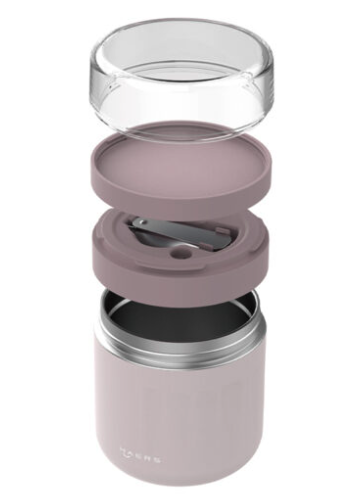
On the other hand, lunch boxes are evolving toward multi-functionality and sustainability. Consumers are paying more attention to food organization, portion control, and eco-friendly materials. Tritan, wheat fiber, and bamboo composite lunch boxes are becoming popular among brands that emphasize green manufacturing and recyclable packaging.
For sellers, this opens up opportunities to differentiate products through design, modularity, and visual appeal rather than pure function.
Another trend worth noting is the convergence of both categories — the rise of hybrid designs. Some modern food jars now include removable compartments, while certain lunch boxes feature insulated shells. This crossover reflects how consumers expect products to be more versatile and long-lasting.
For sellers and OEM/ODM brands, the key takeaway is clear:
Food jars represent a technology-driven path — suitable for brands positioning around performance, durability, or premium gifting.
Lunch boxes represent a design-driven path — ideal for brands focusing on lifestyle, family use, or sustainable living.
By understanding where your brand stands — tech-focused or lifestyle-oriented — you can choose the right product direction, production investment, and marketing story.
5. Cost and Pricing Analysis for OEM/ODM Projects
For sellers and brand owners, understanding the cost structure of food jars versus lunch boxes is critical when planning an OEM or ODM project. Even if the products appear similar at first glance, the materials, manufacturing complexity, and testing requirements create substantial differences in pricing and profitability.
Material Costs:
Food jars primarily use 304 or 316 stainless steel for inner and outer walls, with additional silicone seals and premium lids. High-quality stainless steel alone can significantly increase the per-unit cost.
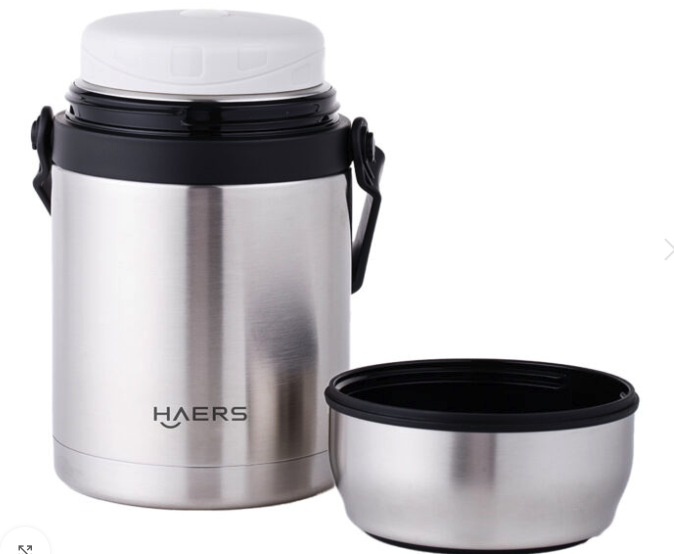
Lunch boxes often rely on PP, Tritan, or plastic composites, with optional stainless steel or glass inserts. These materials are generally cheaper and easier to source, making lunch boxes more cost-effective for mass production.
Manufacturing and Labor:
Food jars require vacuum welding, double-wall assembly, and precision finishing. Every unit must pass insulation and leak-proof testing, which adds labor time and process control costs.
Lunch boxes are typically produced via injection molding and assembly, which is faster and easier to scale, allowing lower labor costs and smaller production cycles.
Customization and Branding:
Adding logos, prints, or coatings to food jars can be more expensive due to surface treatment requirements like powder coating, electroplating, or high-temperature printing.
Lunch boxes allow simpler customization through stickers, laser etching, or printed lids, reducing both cost and minimum order quantities.
Minimum Order Quantities (MOQs):
For food jars, MOQs are usually higher because of the initial investment in molds, vacuum equipment, and quality control processes.
Lunch boxes, with simpler tooling and assembly, often have lower MOQs, making them attractive for promotional items or test runs.
Pricing Implications for Sellers:
Food jars justify premium pricing due to material quality, technical complexity, and thermal performance. They are well-suited for gift markets, corporate branding, and high-end retail.
Lunch boxes can be positioned as cost-efficient, bulk-friendly, and design-focused products. They are ideal for promotional campaigns, school programs, or family packs.
For OEM/ODM decision-makers, the key takeaway is that product selection impacts every aspect of the cost structure — from material sourcing to labor, testing, and branding. Understanding these factors allows brands to align production investment with target pricing, quality expectations, and market positioning.
Fun Fact: Can Food Be Cooked in a Vacuum Thermos?
Here’s a fun question that often comes up when discussing food jars: “Can food be cooked in a vacuum thermos?” The short answer is — in a way, yes! High-quality food jars don’t just keep your soup or noodles warm; their vacuum insulation can retain enough heat to slowly cook soft foods like oatmeal, instant noodles, or rice. It’s like giving your meal a tiny, portable chef while you commute or attend meetings.
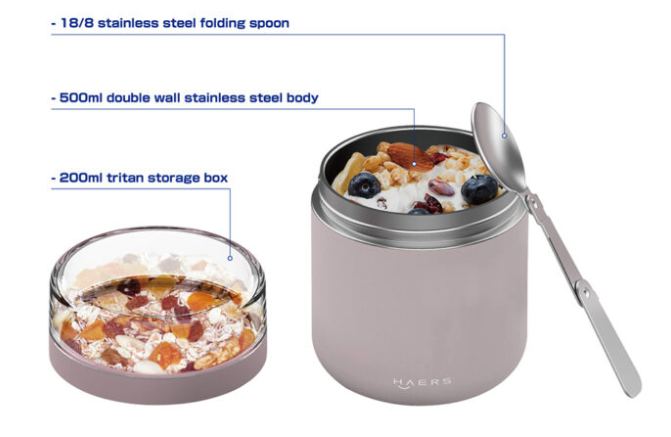
From my perspective, this feature isn’t just cool — it’s a selling point that differentiates premium food jars from standard lunch boxes. Of course, safety is key: raw meat or thick stews aren’t suitable, but simple grains and soft foods can easily benefit from this thermal cooking trick.
When planning your product line or OEM/ODM offering, it’s important to match container types with target users:
Adults or business professionals: prefer durable, high-insulation stainless steel food jars for hot meals at work.
Children: lighter, easy-to-open lunch boxes or smaller insulated jars work best for school lunches.
Outdoor campers: rugged food jars with long heat retention and leak-proof designs are ideal.
For sellers aiming at premium gifting or high-end retail, the choice is clear: stainless steel vacuum food jars deliver both performance and perceived value, making them the perfect showcase product for quality-conscious buyers.


